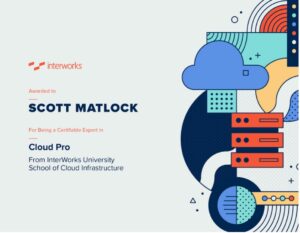I was never taught how to study. I know this because of the overwhelming anxiety I felt recently as I attempted to prepare for a certification exam at a well-known proctored testing facility. The exam consisted of 200 random questions out of a possible 6000-question bank. The study material I was given consisted of four 500-to-700-page physical books, accompanied by the advice, “Read these and you should be fine.”
That was not comforting to me in the least. I have not taken a proctored certification test in 10 years and the last time I attempted one, I failed. Twice. Needless to say, I was not feeling very confident going into my first self-study session. I stared at the daunting mountain of bound paper before me and knew deep in my gut I would not be reading these monstrous abstracts. I needed to begin with some personal reflection on how best to absorb the material I needed to not only learn for this exam but also truly commit to memory, so I could use it in future undertakings.
No One Ever Really Stops Learning
I am a hands-on learner with a strong need for visual demonstration. Reading 3000 pages of documentation was not going to allow me to be considerably successful. I need to see the material in use, either through a video or a live demonstration or by physically performing the actions myself. So I began the hunt for new material that would allow me to learn the skills in my preferred means of absorption. For me, this meant perusing YouTube and downloading trial software. Bonus: Because this product was already in use and there were others knowledgeable in its function, it also meant reaching out to these experts for some hands-on demonstrations.
Ultimately, I passed my exam and now feel confident in my ability to successfully use the newly acquired skills in my professional work. I never once cracked the spines of those demoralizing manuscripts, opting instead for developing my skills in my preferred learning style.
This is only one person’s story for a single test. I’m one InterWorker in a company of over 250, each of whom has unique requirements and certifications necessary to effectively do their job. Here’s a small fraction of us at last year’s holiday party in Stillwater:

Above: I’d say I’m the one in flannel, but that doesn’t narrow it down much.
To properly give each InterWorker a way to learn on their own terms like I did would be a massive undertaking. At InterWorks, however, we’re not ones to shy away from massive undertakings.
The Need for Professional Development
It is neither new nor surprising that everyone learns differently and absorbs information in their own way, but there is still a chasm between many content developers and the means they use to present their valuable knowledge. Working in IT, learning is essential and dynamic on a moment-by-moment basis. The speed at which technology evolves demands constant study and flexibility. This is even more apparent when working as an IT consultant in an MSP-style environment. We not only have to support a highly variable cast of clientele, but we are also beholden to a multitude of vendors that are always evolving their offerings, which requires us as partners to stay on the leading edge. We regularly found ourselves dashing around, attempting to locate training materials buried deep within a well of vendor-developed content. This was not an efficient system of knowledge gain or professional development.
Seeing the need for organization and centralization, we at InterWorks began the hunt for a learning platform that would meet our diverse needs. We needed a place to host curated content, required training from partners, and as professional and personal development materials—a central repository with a quiver of tools learners would use from start to finish on their developmental quest.
We soon found that no perfect tool existed. Some of our challenges included partner training that must be completed in their learning management system, each replete with its own credentialing system and tracking structure. We needed to be able to direct learners to the proper training location and offer them detailed instructions for creating accounts so that credit could be given where it was required. We needed the ability to develop learning paths for students, new hires, interns and the like. Most importantly, we needed the content to be accessible to all learning styles.
The solution we settled on was a home-baked system built on the bones of a well-known open-source LMS platform. Because our needs were more aggregation rather than content creation, we found that the constraints of the paid solutions did not satisfy the current needs of our learning journey. With a little help from our Marketing team, InterWorks University was born:

InterWorks’ Academia
We initially began with what we called Pro Degree Paths. Each path allowed students to become experts in a particular technology that we consider core to our IT strategy at InterWorks. A team member that is already considered an expert in the field would act as the dean of the degree and would assist degree candidates through a thorough expedition of learning, which culminated in a graduation ceremony complete with an IWU diploma:

Above: My very own IWU diploma
From there, we focused on compiling our partner-required training and documentation. Having the IWU system allowed us to consolidate links to the partner training, internal documentation and even some video demonstrations of in-house use of the technology, all in one place. We used this partner training to then develop a section focused on basic knowledge of our preferred products and technology. We call this our reference architecture, and now we have a central home to learn the basics of our favored tools.
To aid in the intense uptake of necessary knowledge when beginning a job at InterWorks, we developed curated learning paths for new engineers, sales team members and interns. The goal of these tracks is to provide Team Leads the ability to point new learners to the necessary information they need to get up and running as a productive, contributing InterWorker. Teams can now better prepare and predict the time needed to onboard a new team member.
To Graduation and Beyond
The list of plans for InterWorks University continues to expand. We hope to curate more hands-on demonstrations by utilizing tools like Zoom to record techs preparing a device or demonstrating software for a client, so others can see a real-world example of a solution’s use. We also plan to develop learner scorecards, so others can see who has a skill that they may need when working on a solution they are less familiar with.
Most importantly, we want to continue to find different methods of learning to appeal to every learning style. We want University to be a universal and comprehensive tool for everyone who wishes to enhance their impact on the world of technology.

